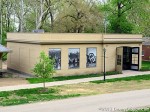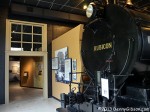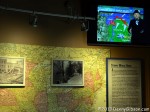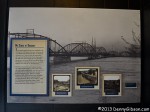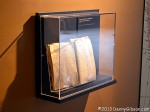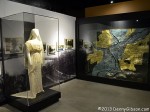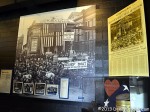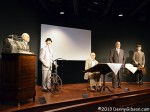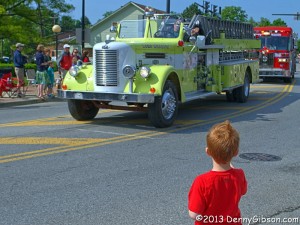 Cincinnati is my mailing address though
Cincinnati is my mailing address though
I definitely do not live within the city limits. The area where I live is governed by township trustees and not inside any city limits at all. The city of Mason is the closest and people even sometimes speak of where I live as “the Mason area”. I’ve been to a few Mason festivals and such but I don’t make a habit of it and I don’t consider my self a Masonite. When the subject of Memorial Day parades came up and a friend mentioned that Mason had one, it struck me that I’d never been and that it was where I ought to go this year.

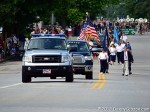 That turned out to be easier said than done. The actual attending was easy enough but finding out when and where was a real challenge. Every town in the area seemed to have at least one Memorial Day related event on every news site’s calendar — except Mason. The friend who had first mentioned the parade eventually came up with the time and route but I’ve no idea from where and the information was accompanied with, “I swear, it’s like they don’t want people to know about it!” Armed with the hard earned information, I made it in time to walk to the staging area and make it back to a big bend in the route before step-off time.
That turned out to be easier said than done. The actual attending was easy enough but finding out when and where was a real challenge. Every town in the area seemed to have at least one Memorial Day related event on every news site’s calendar — except Mason. The friend who had first mentioned the parade eventually came up with the time and route but I’ve no idea from where and the information was accompanied with, “I swear, it’s like they don’t want people to know about it!” Armed with the hard earned information, I made it in time to walk to the staging area and make it back to a big bend in the route before step-off time.

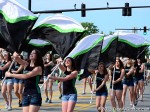
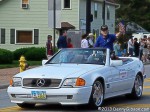 The parade had Grand Marshalls (more on that later), twirling flags, and a marching band…
The parade had Grand Marshalls (more on that later), twirling flags, and a marching band…


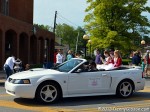 …lots of Girl and Boy Scouts — including one pretty big group carrying a really big flag — and beauty queens.
…lots of Girl and Boy Scouts — including one pretty big group carrying a really big flag — and beauty queens.

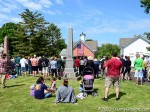 A sizable portion of the crowd, including me, followed the parade to Rose Hill Cemetery where a few ceremonies were scheduled. On the way we passed a fellow leaning back and watching the parade with a WW II veteran’s cap on his head. Someone a few spots in front of me reached out to shake his hand and say thank you. I was one of several people who took the cue and did the same. Yes, I know the difference between Veterans Day and Memorial Day and I sometimes chastise those who don’t. But most, if not all, of these thank yous were personal and exempt from any holiday protocol and they’re all too rare.
A sizable portion of the crowd, including me, followed the parade to Rose Hill Cemetery where a few ceremonies were scheduled. On the way we passed a fellow leaning back and watching the parade with a WW II veteran’s cap on his head. Someone a few spots in front of me reached out to shake his hand and say thank you. I was one of several people who took the cue and did the same. Yes, I know the difference between Veterans Day and Memorial Day and I sometimes chastise those who don’t. But most, if not all, of these thank yous were personal and exempt from any holiday protocol and they’re all too rare.
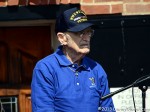
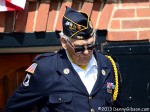
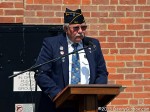 Today’s parade had three Grand Marshalls. Frank Weishaupt, who was in the white Mercedes and is in the first picture, represented World War II veterans. The next picture is of Frank Huffman, Jr., who fought in Korea. The third picture is of John Looker who served in Vietnam and who was also today’s key note speaker. John was wounded more than once. On the day that he received his last and worst wound, eleven men in his unit were killed. Most of his speech did not even reference his own experiences but he ended by reciting the names of those eleven men. Personal? Yes. Appropriate? Very.
Today’s parade had three Grand Marshalls. Frank Weishaupt, who was in the white Mercedes and is in the first picture, represented World War II veterans. The next picture is of Frank Huffman, Jr., who fought in Korea. The third picture is of John Looker who served in Vietnam and who was also today’s key note speaker. John was wounded more than once. On the day that he received his last and worst wound, eleven men in his unit were killed. Most of his speech did not even reference his own experiences but he ended by reciting the names of those eleven men. Personal? Yes. Appropriate? Very.
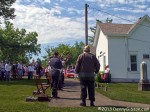 When the speeches were over, two women came forward and placed wreaths on waiting stands. Seven uniformed men, who had been sitting to the side, then stood and fired three volleys as an eighth gave the commands. When they were done, a trumpeter standing next to them played taps as another, many years his junior, stood apart and echoed each note just a couple of seconds later. A benediction followed and brought things to a close. With my memory well focused, I walked back to town and to my car.
When the speeches were over, two women came forward and placed wreaths on waiting stands. Seven uniformed men, who had been sitting to the side, then stood and fired three volleys as an eighth gave the commands. When they were done, a trumpeter standing next to them played taps as another, many years his junior, stood apart and echoed each note just a couple of seconds later. A benediction followed and brought things to a close. With my memory well focused, I walked back to town and to my car.
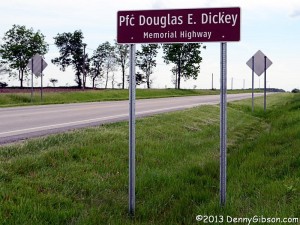 Doug Dickey was a high school classmate of mine who joined the Marines not long after graduation. In March of 1967 he gave his life to protect his comrades and for that was awarded the Congressional Medal of Honor. The citation is here. One of my recent trip journals included a photo of his inscription on the Medal of Honor Memorial in Indianapolis. On March 22 of this year, a portion of Ohio Route 47 was designated as the Pfc. Douglas E. Dickey Memorial Highway and just over a week ago, on May 18, signs marking the highway were unveiled. An article on the unveiling is here.
Doug Dickey was a high school classmate of mine who joined the Marines not long after graduation. In March of 1967 he gave his life to protect his comrades and for that was awarded the Congressional Medal of Honor. The citation is here. One of my recent trip journals included a photo of his inscription on the Medal of Honor Memorial in Indianapolis. On March 22 of this year, a portion of Ohio Route 47 was designated as the Pfc. Douglas E. Dickey Memorial Highway and just over a week ago, on May 18, signs marking the highway were unveiled. An article on the unveiling is here.

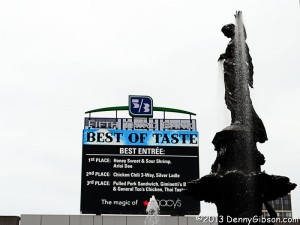


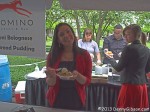
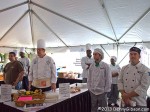
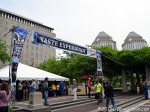
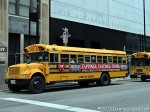
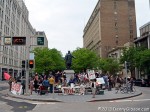

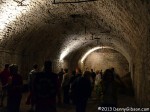
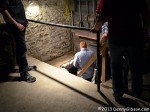
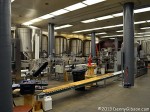
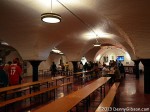
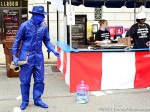
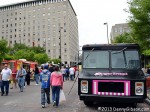
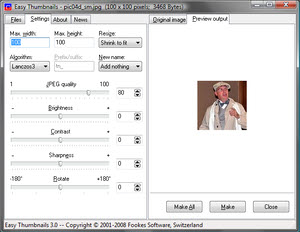 My first attempt at writing this post got all bound up in explaining why I do thumbnails the way I do. As I rearranged the second paragraph for the third or fourth time, I heard my own echo from long ago, “If it’s this hard to write, it’s going to be a bitch to read.” That’s usually a pretty good signal that a basic rethink is in order. When I stepped back, I quickly realized two things. One, some of my reasons are truly arbitrary and naturally hard to explain, and two, nobody cares. There aren’t many who care if I do something, fewer care how, and the number who care why has to be near zero. If someone does want to know why, just ask and I’ll be happy to explain and ‘fess up to the arbitrary bits. For now, I’m just going to talk about how I do them and how Easy Thumbnails fits in.
My first attempt at writing this post got all bound up in explaining why I do thumbnails the way I do. As I rearranged the second paragraph for the third or fourth time, I heard my own echo from long ago, “If it’s this hard to write, it’s going to be a bitch to read.” That’s usually a pretty good signal that a basic rethink is in order. When I stepped back, I quickly realized two things. One, some of my reasons are truly arbitrary and naturally hard to explain, and two, nobody cares. There aren’t many who care if I do something, fewer care how, and the number who care why has to be near zero. If someone does want to know why, just ask and I’ll be happy to explain and ‘fess up to the arbitrary bits. For now, I’m just going to talk about how I do them and how Easy Thumbnails fits in. The Lincoln Highway turns a hundred this year. Brian Butko’s Greetings from the Lincoln Highway turns eight. At first glance, the 2013 Greetings… looks an awful lot like the 2005 Greetings… with a soft cover and a “Centennial Edition” banner on the front and it’s a fact that, in many ways, it is the same. It has the same organization with an introductory chapter and a chapter, with map, for each state the highway passed through and a very high percentage of the words and pictures in those chapters are the same, too. Another thing that remains the same and which accounts for the small in percentage but large in number changes is the care and attention to detail. Butko probably didn’t catch everything in the book that the passage of time has altered but he sure tried and he sure got a lot.
The Lincoln Highway turns a hundred this year. Brian Butko’s Greetings from the Lincoln Highway turns eight. At first glance, the 2013 Greetings… looks an awful lot like the 2005 Greetings… with a soft cover and a “Centennial Edition” banner on the front and it’s a fact that, in many ways, it is the same. It has the same organization with an introductory chapter and a chapter, with map, for each state the highway passed through and a very high percentage of the words and pictures in those chapters are the same, too. Another thing that remains the same and which accounts for the small in percentage but large in number changes is the care and attention to detail. Butko probably didn’t catch everything in the book that the passage of time has altered but he sure tried and he sure got a lot.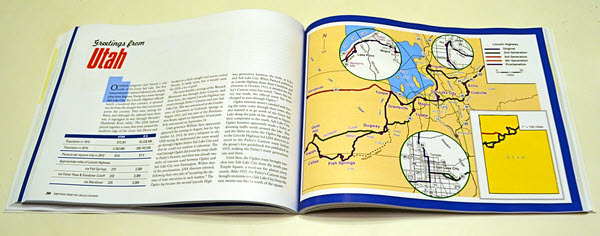 Aside from the occasional new photo, the most visible changes may be in the statistics and maps at the front of each state chapter. Here population numbers from the 2010 census replace those from the 2000 census and the maps get a line for the Proclamation Route. The Lincoln Highway Proclamation Route was a list of cities published by the Lincoln Highway Association on September 14, 1913. Shifts started happening almost immediately and a detailed route was never signed or published that matched the September 14 announcement. But several of the cities dropped in 1913 fought unsuccessfully to return and many have fought more recently and more successfully to be recognized. Butko acknowledges that by including the ephemeral route. All of the quotes from postcards and other period communication that appeared in the margins of the original are still there and a few more have been added.
Aside from the occasional new photo, the most visible changes may be in the statistics and maps at the front of each state chapter. Here population numbers from the 2010 census replace those from the 2000 census and the maps get a line for the Proclamation Route. The Lincoln Highway Proclamation Route was a list of cities published by the Lincoln Highway Association on September 14, 1913. Shifts started happening almost immediately and a detailed route was never signed or published that matched the September 14 announcement. But several of the cities dropped in 1913 fought unsuccessfully to return and many have fought more recently and more successfully to be recognized. Butko acknowledges that by including the ephemeral route. All of the quotes from postcards and other period communication that appeared in the margins of the original are still there and a few more have been added.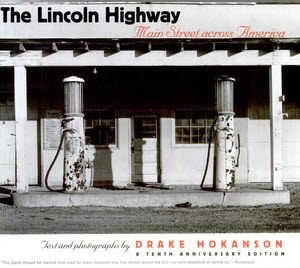 I’m reading this book for the third time. I read it around 2005 when I was dabbling with short drives on the Lincoln Highway to my east. I reread it in 2009 when I was getting ready to drive the Lincoln from the east edge of Illinois to the west coast. My current read is in anticipation of another long, hopefully full length, drive of what Drake Hokanson calls Main Street across America. I never read the original, only the pictured Tenth Anniversary Edition which is now fifteen years old itself.
I’m reading this book for the third time. I read it around 2005 when I was dabbling with short drives on the Lincoln Highway to my east. I reread it in 2009 when I was getting ready to drive the Lincoln from the east edge of Illinois to the west coast. My current read is in anticipation of another long, hopefully full length, drive of what Drake Hokanson calls Main Street across America. I never read the original, only the pictured Tenth Anniversary Edition which is now fifteen years old itself.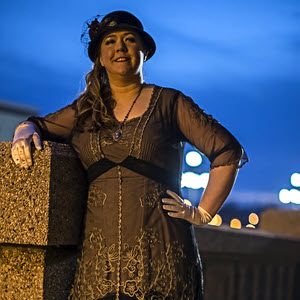
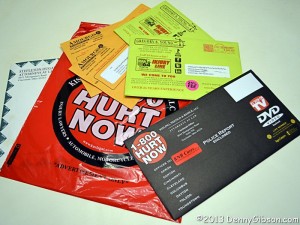
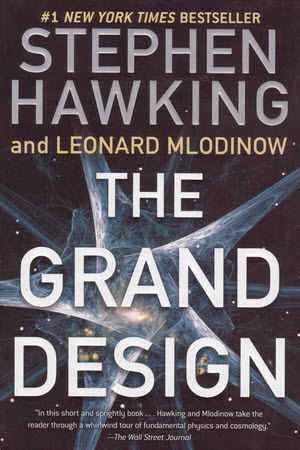 If you think this looks like it belongs here, you haven’t been paying attention. No, books about cosmology, quantum physics, and beyond aren’t what I typically read and I’m clearly not qualified to review them. I was given the book as a gift, I read and enjoyed it, and I intend to tell somebody about it.
If you think this looks like it belongs here, you haven’t been paying attention. No, books about cosmology, quantum physics, and beyond aren’t what I typically read and I’m clearly not qualified to review them. I was given the book as a gift, I read and enjoyed it, and I intend to tell somebody about it.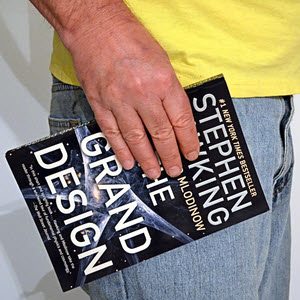 I started off admitting that this book was really out of place here. I do a lot of my reading over meals in restaurants and it was rather out of place in some of the joints where I eat, too. I quickly worked out a way to carry the book that cut down considerably on the funny looks aimed my way.
I started off admitting that this book was really out of place here. I do a lot of my reading over meals in restaurants and it was rather out of place in some of the joints where I eat, too. I quickly worked out a way to carry the book that cut down considerably on the funny looks aimed my way.
